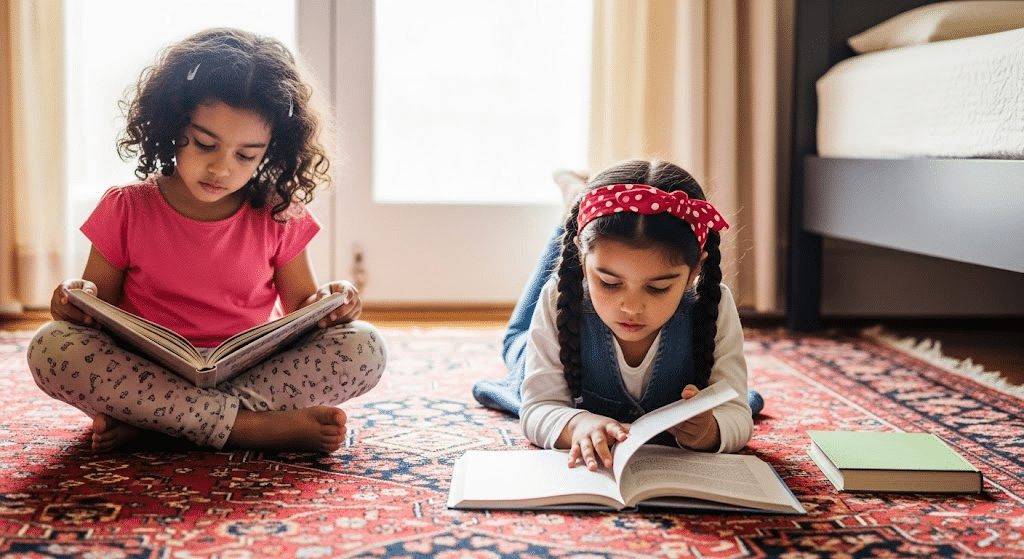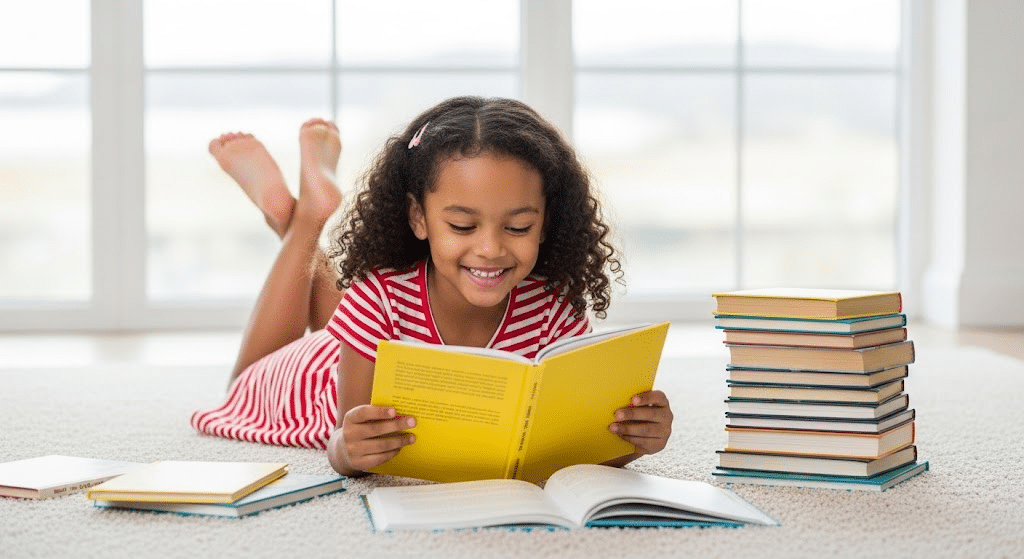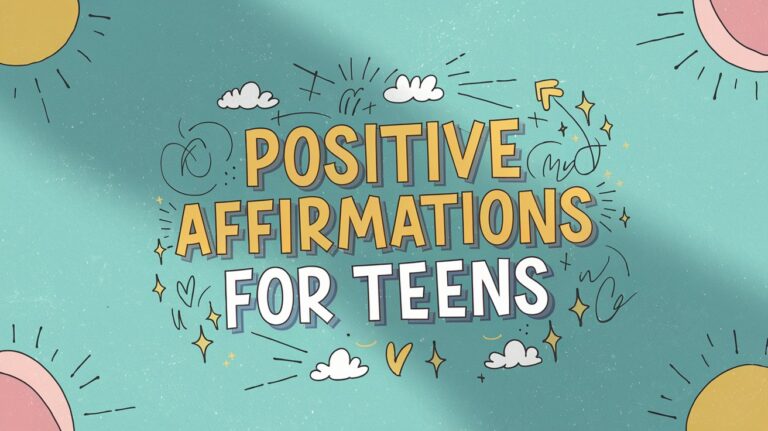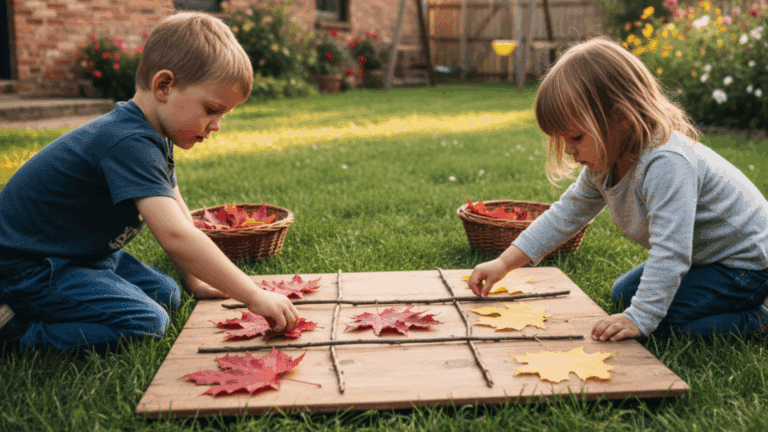Every parent wonders when their child will pick up their first book and start reading on their own.
However, many people don’t realize that children actually begin their reading journey much earlier than they think, often before they can speak clearly.
Understanding when do kids start reading helps parents recognize early signs of literacy development and support their child’s learning at the right moments.
Early reading skills form the foundation for academic success, social development, and lifelong learning.
Let’s find an interesting timeline of how children develop reading skills and what you can expect along the way.
What to Expect from Pre-K to Early Elementary
Most children start showing interest in books between ages 2 and 3. They point at pictures and pretend to read. By age 4, many kids can recognize some letters and understand that text flows from left to right.
The magic really happens between ages 5 and 7. This is when do kids start reading simple words and short sentences. Some children read fluently by kindergarten, while others need until first or second grade. Both timelines are completely normal.
Here’s what you can expect:
- Ages 2-3: Shows interest in books, knows some letter sounds
- Ages 4-5: Recognizes letters, understand print concepts
- Ages 5-6: Reads simple words, short sentences
- Ages 6-7: Reads beginner books independently
- Ages 7-8: Reads chapter books with confidence
Remember, every child moves at their own pace. Some zoom ahead while others take their time building skills.
Factors Influencing When a Child Starts Reading
Several key factors determine when children begin their reading journey. Understanding these influences helps parents set realistic expectations and provide appropriate support.
| Factor | What Influences Reading | Timeline Impact |
|---|---|---|
| Individual Development | Brain maturity, attention span, language processing | May read 1-2 years earlier or later than peers |
| Home Environment | Daily reading, book availability, parent modeling | Can accelerate readiness by 6-12 months |
| Educational Support | Preschool programs, teaching methods, activities | Quality programs support development by age 4-5 |
| Learning Differences | Processing challenges, attention issues, dyslexia | May require specialized approaches and extra time |
Each child brings a unique combination of these factors, which explains why reading timelines vary so widely among children of the same age.
What Are the Signs That Your Child Is Ready to Read?

Watching for reading readiness signs helps you know when your child is ready to take the next step. These clear indicators show that their brain has developed the skills needed to connect letters with sounds and meaning.
Interest in Books
- Picks up books on their own and pretends to read
- Asks for the same stories repeatedly
- Sits quietly looking at pictures in books
- Corrects you if you skip pages or change words
Letter Recognition
- Points out letters they know, especially in their name
- Spot familiar letters on signs and in books
- Tries to write letters, even if they look messy
- Shows interest in alphabet games and activities
Sound Awareness
- Enjoys rhyming games and silly word sounds
- Clap along with syllables in words
- Stretches out sounds when talking
- Can hear similar sounds in different words
Vocabulary Growth
- Speaks in longer, complete sentences
- Asks lots of questions about new words
- Can retell simple stories in their own words
- Shows curiosity about unfamiliar words they hear
Attention and Focus
- Sits through entire picture books without getting distracted
- Listens to stories and answers questions about them
- Shows patience when working on letter activities
- Can concentrate on tasks for longer periods
Physical Development
- Holds crayons and pencils properly
- Can draw basic shapes and lines
- Turns book pages carefully
- Has good hand-eye coordination for detailed work
Pro Tip: The biggest sign is when your child asks, “What does that say?” about printed words.
Adapting to Your Child’s Learning Style

Every child learns differently, and understanding your child’s learning style helps them succeed with reading. Some kids are visual learners who need pictures and colors. Others learn best through sounds and music.
Many children need hands-on activities to understand new concepts.
Visual learners love colorful books with lots of pictures. They respond well to flashcards, charts, and written instructions. Try highlighting essential words or using different colored pens for letters.
Auditory learners enjoy stories read aloud and learning through songs. They benefit from rhyming games and verbal instructions. Let them listen to books on audio while following along.
Kinesthetic learners need movement and touch. They learn letters by tracing them in sand or forming them with playdough. These kids enjoy acting out stories and using their whole bodies.
Watch how your child naturally approaches new tasks. Adapt your reading activities to match their style for better results.
Fun Activities to Help Kids Start Reading

Learning to read doesn’t have to feel like work for your child. These simple activities turn reading practice into playtime while building essential skills that help answer when do kids start reading.
Letter Scavenger Hunt:
Turn letter recognition into an exciting game by creating a scavenger hunt around the house.
Ask your child to find objects that start with different letters, like “apple” for A or “book” for B. This hands-on activity helps reinforce letter sounds while kids enjoy the treasure hunt feeling.
Interactive Storybooks and Apps:
Make reading more engaging with interactive books or reading apps. Many feature characters that respond to touch, letting children practice phonics through interactive exercises. It’s a great way to keep kids motivated while learning.
Making Alphabet Cards:
Create homemade alphabet cards as a creative way to reinforce letter recognition. Children can decorate cards with drawings or stickers and then use them for games or flashcards. This activity combines art with learning perfectly.
Reading Relay:
Add physical movement to reading by organizing a reading relay race. Create stations with simple words or letters to read aloud. This combines literacy skills with physical activity, keeping active children engaged while practicing.
Rhyming Word Puzzles:
Create rhyming word puzzles where kids match words that rhyme. Use simple paper cutouts or printed rhyming words. This promotes word comprehension and phonemic awareness through game-like learning.
Tips and Advice for Encouraging Early Reading in Kids
Creating a reading-friendly environment doesn’t require expensive materials or complicated strategies. Simple changes at home can spark a child’s interest in books and letters.
- Make Books Part of Daily Life: Keep picture books in every room, car, bathroom, and bedroom. This shows that reading happens everywhere.
- Start With Fun Letter Activities: Try finger painting letters in pudding or hide magnetic letters for treasure hunts. Make learning feel like play.
- Practice Rhyming Games During Routine Activities: Sing silly songs while getting dressed or make up rhymes during bath time. This builds sound awareness naturally.
- Read Aloud With Expression and Enthusiasm: Use different voices for characters and pause at exciting moments. Point to words occasionally to connect speech with text.
- Model Reading Behavior Throughout the Day: Let children see adults reading newspapers, recipes, or books. Show them that reading serves many purposes in daily life.
Conclusion
Helping Your Child Develop a Lifelong Love for Reading
Remember, when do kids start reading isn’t a race, it’s a beautiful process that unfolds differently for every child. Some children read at four, others at seven. Both paths lead to the same destination.
The key lies in patience and consistency. Parents who read daily, celebrate small wins, and keep books accessible create the perfect environment for literacy growth.
Don’t worry if progress seems slow. Every story shared, and every letter learned builds the foundation.
Your child’s reading journey is just beginning. Stay encouraging, stay patient, and most importantly, keep reading together. The love of books you nurture today will last a lifetime.


















